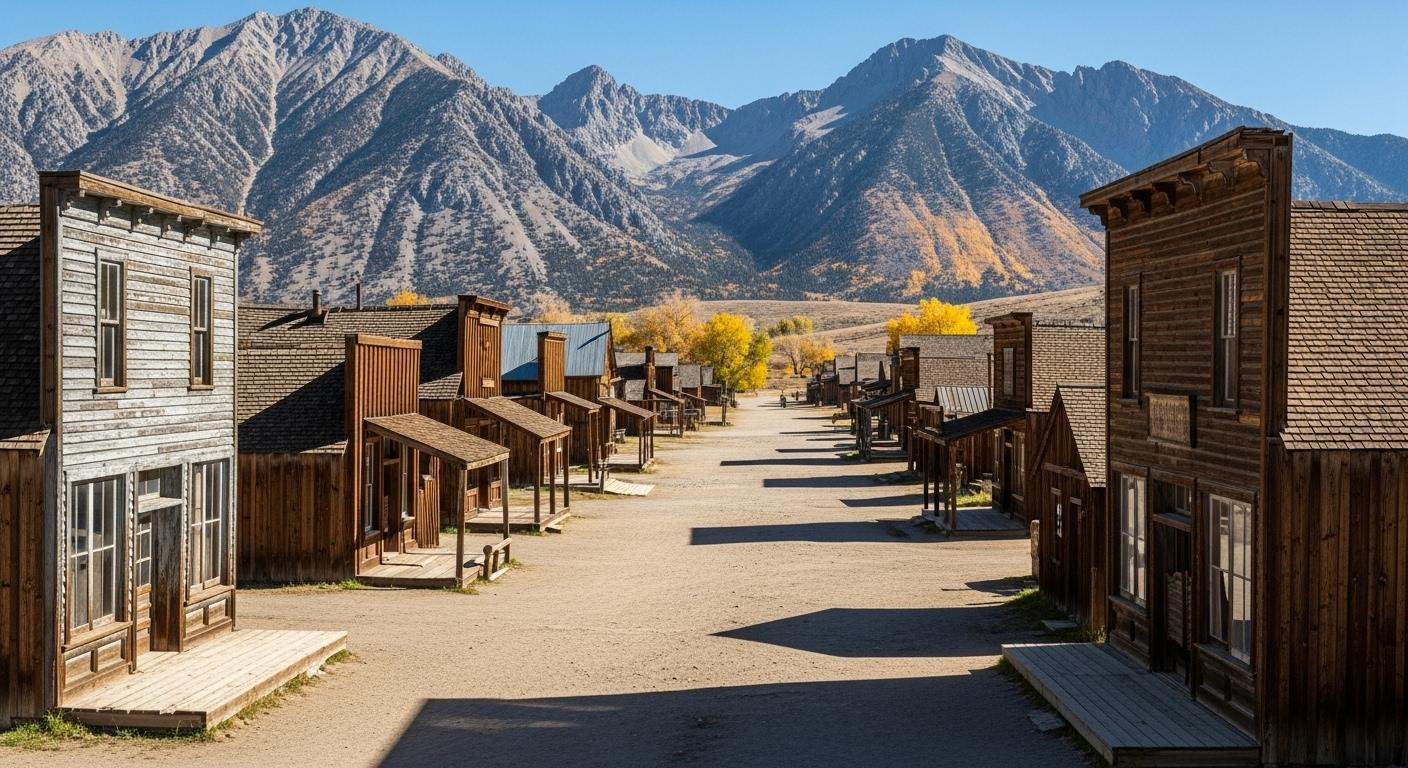The photographer adjusts her lens at 6:47 AM, golden light washing over Bodie’s weathered saloons. No tour buses. No Instagram crowds. Just silence and the soft creak of century-old wood in morning wind. While millions queue at Alcatraz and Tombstone, America’s most photogenic abandoned places receive fewer than 150,000 visitors annually. These aren’t ruins – they’re sanctuaries that history buffs and preservationists quietly protect through limited promotion and reverent stewardship.
The ghost towns photographers discover at first light
Bodie State Historic Park sits at 8,379 feet in California’s Sierra Nevada mountains. The nearest major city, Los Angeles, lies 330 miles south – a six-hour drive that keeps casual tourists away. Eastern State Penitentiary occupies 11 acres in Philadelphia’s Fairmount neighborhood, accessible by train yet mysteriously overlooked by most visitors.
October mornings bring temperatures between 30-85°F across these sites. Fall’s golden light illuminates preserved architecture with cinematic clarity. Remote lighthouses share this same haunting beauty, where isolation creates profound atmospheric experiences.
The sensory arrival varies dramatically. Bodie’s dry pine scent mingles with aged wood. Eastern State’s stone corridors carry musty air and metallic traces from rusted iron bars. Steam vents at Pennsylvania’s abandoned Centralia emit faint sulfur beneath cracked pavement.
What 150 years of abandonment actually preserves
These locations practice “arrested decay” rather than restoration. Bodie maintains over 100 original 1870s buildings exactly as residents left them. Interiors remain stocked with period goods, china shards, and square nails visible but untouchable.
Architecture that tourism never touched
Eastern State Penitentiary pioneered radial prison design in 1829, influencing 300 facilities worldwide. Its Gothic Revival stonework features vaulted cell blocks and dramatic shadow patterns perfect for photography. The facility housed 85,000 inmates including notorious figures like Al Capone before closing in 1971.
Bodie preserves vernacular frontier architecture: sun-bleached wooden facades, weathered saloons, mining equipment frozen in place. The town peaked at 10,000 residents during California’s Gold Rush before abandonment in the 1940s following gold depletion.
The stories locals still tell
California designated Bodie as the state’s official gold rush ghost town. National Historic Landmark status protects Eastern State Penitentiary as America’s first true penitentiary. Alabama’s controlled tourism approach mirrors these sites’ philosophy of preservation over promotion.
Local historians emphasize authentic storytelling over sensationalized narratives. Museum exhibits at Eastern State explore criminal justice evolution rather than glorifying notorious inmates. Bodie’s rangers live in original homes, maintaining the site’s authentic atmosphere.
How to experience these places before others find them
Spring through fall offers optimal visiting conditions (April-October). Winter snow closes Bodie’s access roads, while Eastern State operates year-round with reduced winter hours. Dawn arrivals provide the most solitude and dramatic lighting for photography.
The optimal seasons and times
Bodie experiences summer temperatures of 70-85°F, dropping to 20-40°F in winter with heavy snowfall. Eastern State maintains comfortable 75-85°F conditions during tour season. Fall visits capture golden light enhancement of decay aesthetics while avoiding summer tourist peaks.
Recent visitor surveys from 2025 reveal October as the quietest month. Dawn photography strategies work exceptionally well at these locations, with 6:47 AM providing optimal lighting before crowds arrive at 10 AM.
What the $10-$250 actually buys
Entry fees remain minimal: Bodie charges $10 per vehicle for California State Park access. Eastern State Penitentiary offers guided tours for $15-25, featuring audio guides narrated by former guards and inmates. Self-guided options cost less but provide equal access to preserved spaces.
Accommodation varies dramatically by location. Budget motels near Bodie and rural sites cost $70-120 per night. Philadelphia boutique inns near Eastern State range $120-250 nightly. Multi-site road trips offer cost-effective ways to visit multiple abandoned places during off-season timing.
The silence that changes how you see history
Standing in Bodie’s Methodist church, morning light illuminates dust suspended in 150-year-old air. Eastern State’s corridor footsteps echo exactly as they did during Al Capone’s incarceration. This isn’t museum-curated history but unfiltered temporal immersion impossible at crowded landmarks.
While Alcatraz processes ferry loads of 1.5 million annual visitors, these five places preserve uncomfortable truths through silence. The absence of commercial interpretation allows personal discovery. Recent visitor feedback consistently emphasizes the profound impact of solitude on historical understanding.
Tourism boards confirm these sites intentionally limit promotion. Preservation philosophy prioritizes structural integrity over visitor numbers. The result: authentic experiences unavailable at commercialized alternatives.
Your questions about America’s most beautiful abandoned places answered
Are these sites safe to visit in 2025?
Bodie and Eastern State maintain official visitor infrastructure including marked trails, guides, and restrooms. Both sites employ professional staff and follow state safety regulations. Centralia remains officially closed due to underground fire hazards including potential sinkholes and toxic gas emissions.
Always check seasonal closures before visiting. Bodie becomes inaccessible during heavy winter snowfall. Eastern State operates standard April-October hours with extended summer programming.
How do these compare to famous ghost towns like Tombstone?
Bodie offers authentic preservation versus Tombstone’s commercialized reenactments. Visitor density differs dramatically: Bodie receives 50,000 annual visitors compared to Tombstone’s millions. This creates opportunities for solo photography and contemplative silence impossible at tourist-packed alternatives.
Preservation philosophy also varies significantly. Bodie’s arrested decay maintains original materials while many famous ghost towns feature reconstructed facades and modern amenities that compromise historical authenticity.
What’s the best multi-site route for abandoned place photography?
East Coast visitors can combine Philadelphia’s Eastern State with Pennsylvania’s Centralia (2-hour drive) over a long weekend. California’s Bodie requires dedicated West Coast travel due to its remote Sierra Nevada location. Fall timing provides optimal conditions: October colors enhance decay aesthetics while temperatures remain comfortable and crowds minimal.
The café owner locks Bodie’s last door at 9:47 PM, three hours after the final photographer departed. Tomorrow at dawn, another solitary visitor will witness where Wild West dreams crystallized in golden light and weathered wood.
